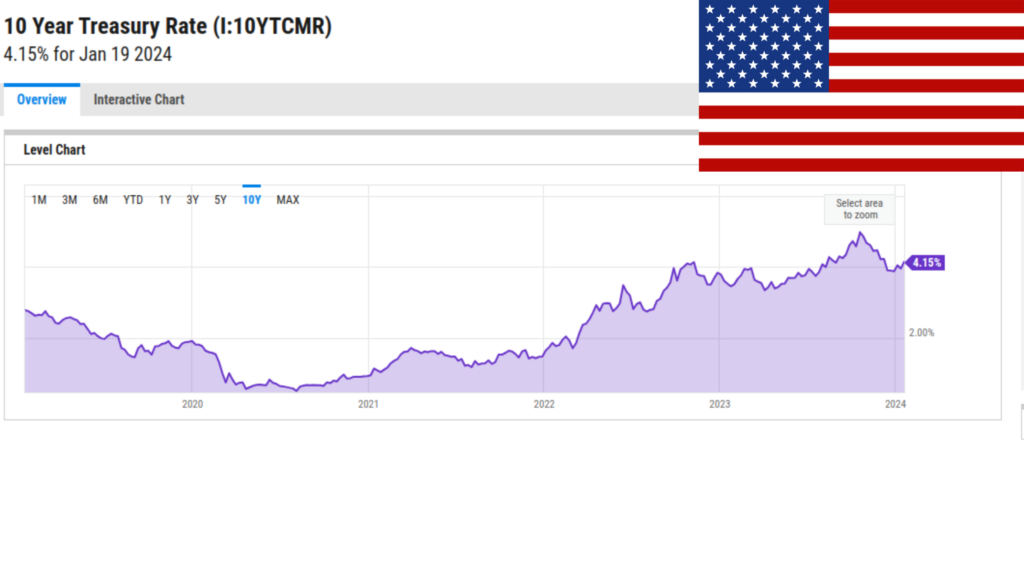Recent Shifts in US Treasury Yields and the Revival of Deal Activity

In the dynamic realm of finance, recent headlines have been dominated by the surge in US Treasury yields, reaching unprecedented heights. Simultaneously, Wall Street leaders are signaling the end of a prolonged dealmaking hiatus that has cast a shadow over the market for an extended period. This blog post will meticulously explore these occurrences, their ramifications, and the potential implications for the future of the financial landscape.
Surging US Treasury Yields :
The US Treasury yield, representing the return on investment for holding a US government bond, has undergone a substantial increase, triggering a notable transformation in the financial market. Multiple factors contribute to this surge, with one possible explanation being the revitalization of the global economy. This economic improvement diminishes the demand for safe-haven assets like US government bonds, as investors pivot towards riskier assets with the potential for higher returns.
Another influential factor in the escalation of US Treasury yields is the Federal Reserve’s monetary policy. Gradual interest rate hikes by the Fed, aimed at curbing inflation and stabilizing the economy, have increased the cost of borrowing money. This change is reflected in the elevated yields on US government bonds.
The Conclusion of the Dealmaking Drought :

The extended period of sluggish dealmaking on Wall Street seems to be concluding, according to industry leaders. This drought, characterized by a decline in mergers, acquisitions, and other financial transactions due to economic uncertainty and regulatory scrutiny, appears to be reaching its nadir. Optimism surrounds the market, driven by improved economic conditions instilling confidence in investors and companies to pursue new opportunities.
Additionally, recent alterations in US tax policy may play a pivotal role in reigniting dealmaking. The revised tax laws could render mergers and acquisitions more appealing to companies by offering tax incentives and reducing overall transaction costs.
Implications and Outlook :
The resurgence of US Treasury yields and the end of the dealmaking drought hold profound implications for the financial market and the broader economy. The heightened US Treasury yields might signify a shift in investor sentiment towards riskier assets, potentially leading to increased market volatility as portfolios are adjusted to capitalize on new opportunities.
The conclusion of the dealmaking drought could usher in a flurry of mergers, acquisitions, and financial transactions, fostering economic growth, job creation, and a more competitive business environment.
In consideration of the potential impact on the Indian market, several factors merit attention:
Foreign Portfolio Investment (FPI) Flows:The rise in US bond yields may attract foreign investors away from emerging markets like India, resulting in a potential decline in the Indian stock market.
Currency Fluctuations: Strengthening of the US dollar against the Indian rupee could impact trade balance and overall economy, making Indian exports more competitive but increasing import costs.
Interest Rates: The Reserve Bank of India (RBI) might adjust its monetary policy to control inflation, potentially leading to increased interest rates, impacting borrowing costs for businesses and consumers.
Corporate Performance: The revival of dealmaking could stimulate economic growth, job creation, and foster a more dynamic business environment in India.
Considering the impact on gold rates, the rise in US Treasury yields may diminish the appeal of gold as an investment due to increased opportunity costs. Furthermore, the end of the dealmaking drought could strengthen the US dollar, potentially exerting downward pressure on gold prices.
conclusion :
the recent developments in US Treasury yields and the conclusion of the dealmaking drought could have varying impacts on the Indian market and the broader economic landscape. As the financial world continues to evolve, staying informed and adapting to changing conditions will be crucial for investors and financial professionals. While the future remains uncertain, it promises to be an intriguing journey.





